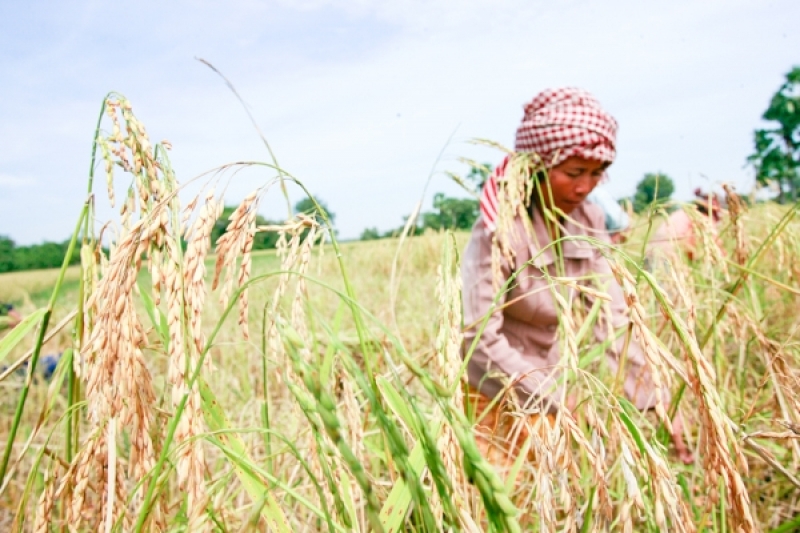




According to the Ministry of Agriculture, Forestry and Fisheries’ planning and statistics department, the total area planted with rice in Cambodia reached 2.54 million hectares last week. This, the department said, was higher than the 2.47 million hectares cultivated during the same period last year.
Takeo is the leading province with 263,106 hectares of land planted with rice, followed by Battambang and Banteay Meanchey with 258,710 and 244,835 hectares respectively.
But unpredictable weather caused by climate change, that could disrupt the livelihoods of farmers, is worrying many.
Soun Bovor, provincial governor of Banteay Meanchey, said that even though the rainy season started a month ago, some parts of the province are still facing drought.
“We have finished planting the rice seedlings, but some areas have not enough water due to lack of rain. We are worried that the seedlings will die,” said Mr. Bovor.
“We are just praying for favorable weather and more rain,” he added.
Rice cultivation is sensitive to climate change, given its high reliance on water for a good crop yield.
According to a report from the UN World Food Program (WFP) changes in rainfall patterns can increase the likelihood of crop failure and result in production declines.
“Higher temperatures in key producing areas typically result in reduced yields of desirable crops whilst extreme weather events such as droughts, floods, and storms can exacerbate food security problems,” added the report titled “Climate Impacts on Food Security and Livelihoods in Asia”.
Den Sreylin, a rice farmer in Battambang’s Sang Ke district, said she was worried about low rainfall in the current rainy season.
“Due to the low rainfall, there is not enough water for all my rice fields,” said Ms. Sreylin who farms in a 2,125-hectare rice collective with several other farmers in Raingsey commune.
But Ms. Sreylin said she was more worried about flash floods destroying all of her rice crop.
“We can get by with the lack of water. Some of the seedlings will survive and we will be prepared for a low harvest,” she said. “With flash floods, however, we will be totally wiped out because it just destroys all the crop.”
Chan Yutha, spokesman for the Ministry of Water Resources and Meteorology, said floods are forecast to hit the northwestern provinces either next month or October.
“The flash floods would be caused by heavy rain in Cambodia or from the flow of floodwater from neighboring countries,” said Mr. Yutha.
In September 2013, floods affected 17 of Cambodia’s 24 provinces. According to Cambodia’s National Committee for Disaster Management, the floods killed over 200 people, forced the evacuation of more than 34,000 households, and destroyed some 200,000 hectares of rice fields, which comprise nearly 10 percent of the country's harvest.
The 2013 floods were similar to the floods in October 2011, killing as many as 250 people and causing over $500 million in damage.
Mr. Bovor, the Banteay Meanchey provincial governor, said his province had made emergency preparations to deal with the flash floods.
“We are in constant communication with the ministry [of water resources and meteorology] and are prepared,” he said.
According to the WFP report, large parts of Asia are likely to experience more frequent and intense floods due to shorter but more intense rainy seasons.